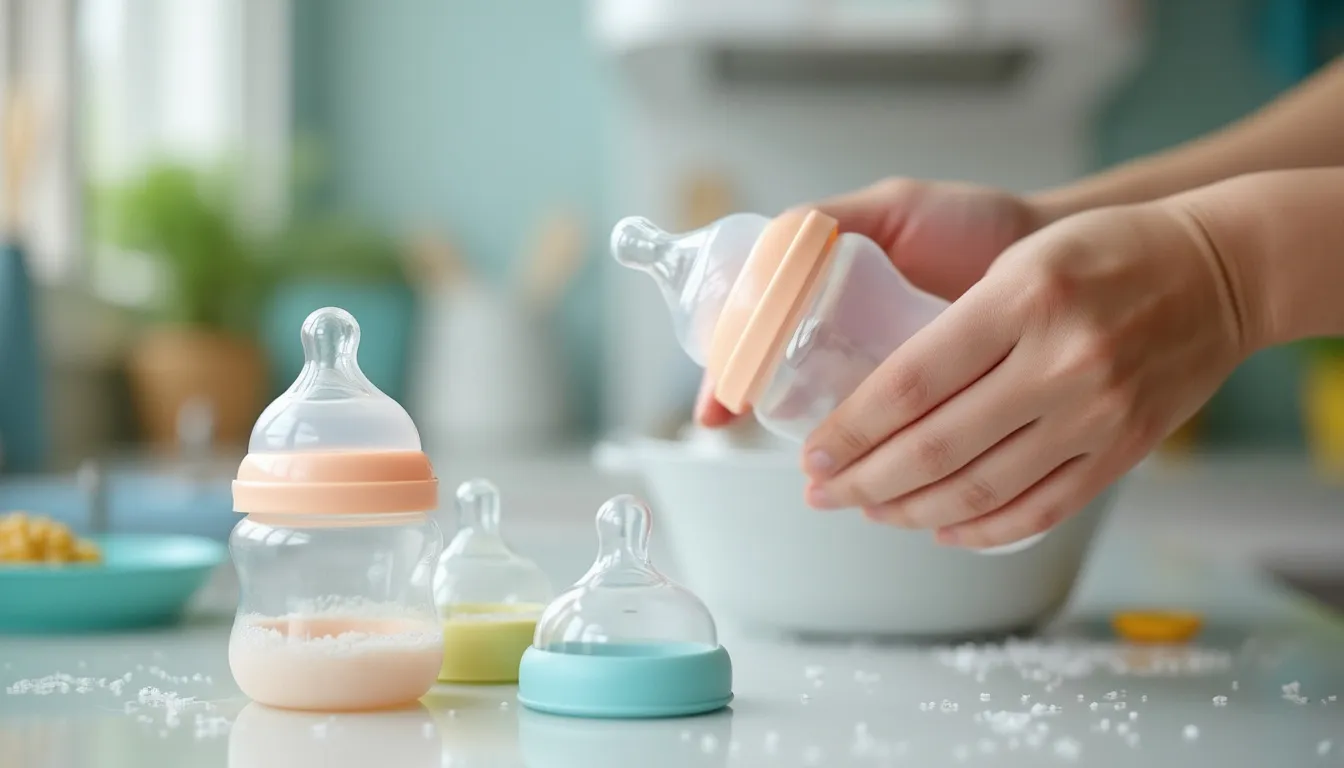How to Sterilize Baby Feeding Equipment
As a new mom, ensuring the safety and health of your baby is undoubtedly your top priority. One of the essential tasks you'll find yourself doing regularly is sterilizing baby feeding equipment. From bottles to pacifiers, keeping these items germ-free is crucial. In this review, I'll share my personal experience with different sterilization methods and provide insights to help you choose the best products for your needs.

Understanding the Importance of Sterilization
Before diving into the methods, let's talk about why sterilization is so important. Babies have developing immune systems, making them more susceptible to infections. Sterilizing feeding equipment helps eliminate harmful bacteria and viruses, ensuring your little one stays healthy.
Methods of Sterilization
There are several methods available, each with its pros and cons. Here's a breakdown based on my experience:
Boiling
This is the most traditional method and involves boiling bottles and nipples in water for about 10 minutes. It's effective and doesn't require any special equipment. However, it can be time-consuming, and there's a risk of damaging some plastic components if not monitored closely.
Steam Sterilizers
Steam sterilizers are a popular choice among many parents, including myself. They use high-temperature steam to kill germs and are generally quick and easy to use. I found them particularly convenient for daily use, as they can sterilize multiple items at once. The downside is that they can be a bit bulky and require a power source.
Microwave Sterilizers
These are similar to steam sterilizers but use your microwave to generate steam. They're compact and perfect for small kitchens. I appreciated their portability when traveling. However, you need to ensure your microwave is compatible, and they might not fit larger bottles.
Chemical Sterilization
This involves using sterilizing tablets or solutions. It's a cold method, which is great for heat-sensitive items. I found it useful for sterilizing toys and teethers. The main drawback is the need to rinse thoroughly to avoid any chemical residue.
Choosing the Right Products
When selecting sterilization products, consider your lifestyle and needs. If you're always on the go, a microwave sterilizer might be ideal. For those with more time at home, a steam sterilizer could be more efficient. Always check the compatibility of your bottles and equipment with the sterilization method to avoid any damage.
In conclusion, sterilizing baby feeding equipment is a crucial step in safeguarding your baby's health. With various methods available, you can choose one that fits your lifestyle and preferences. Remember, the best product is the one that makes your life easier while ensuring your baby's safety.
Car Seats
The Benefits of Using a Car Seat Base
How Weather Conditions Affect Car Seat Safety
Car Seats and Climate: Keeping Your Baby Comfortable Year-Round
Car Seat Accessories That Enhance Safety and Comfort
Understanding Car Seat Safety Standards and Regulations
How to Handle Car Seat Recalls: A Parent’s Guide
Diapering
How to Create a Diaper Changing Station at Home
Eco-Friendly Diapering Options for Conscious Moms
Diaper Sizing Guide: Finding the Perfect Fit for Your Baby
Choosing the Right Diaper for Your Baby's Age and Weight
Cloth vs. Disposable Diapers: Pros and Cons
How to Save Money on Diapers: Budget-Friendly Tips